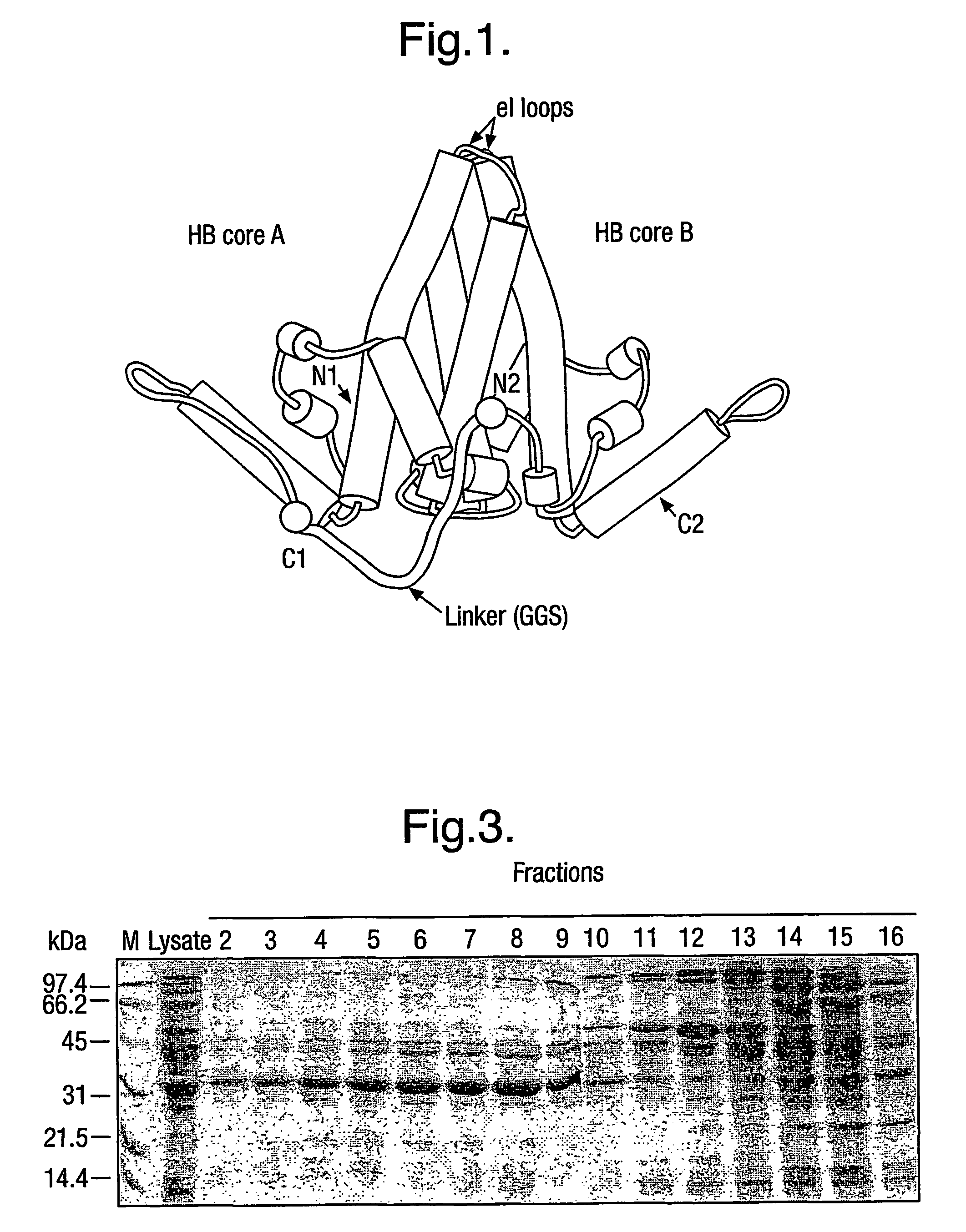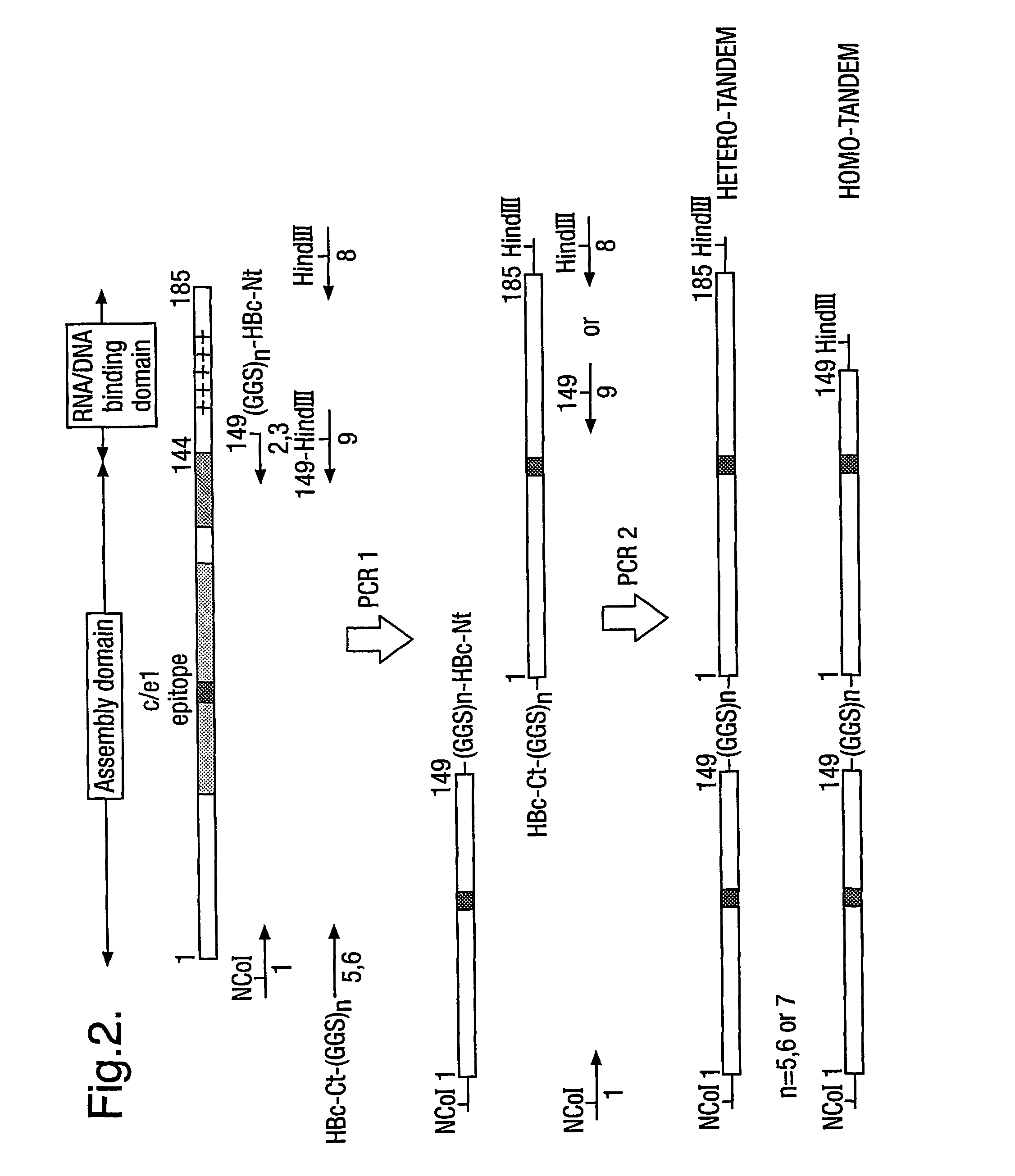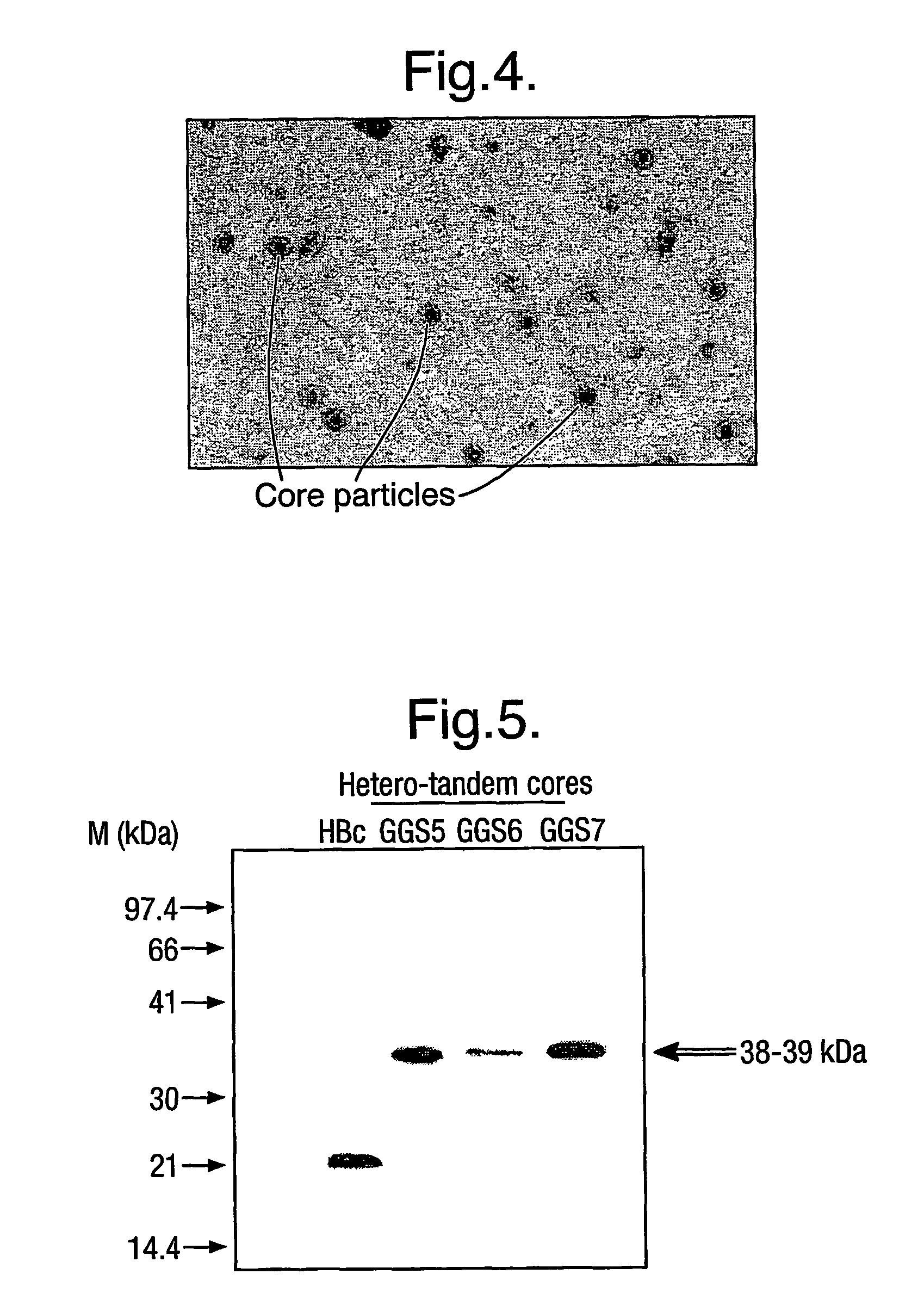Hepatitis B core antigen fusion proteins
a technology of hepatitis b and fusion proteins, applied in antibody ingredients, peptide sources, whole-cell/virus/dna/rna ingredients, etc., can solve the problems of hepatitis b, hepatocellular carcinoma and death, and achieve the effect of strengthening the immune respons
- Summary
- Abstract
- Description
- Claims
- Application Information
AI Technical Summary
Benefits of technology
Problems solved by technology
Method used
Image
Examples
Embodiment Construction
The Protein
[0008]The basic building block of the protein of the invention is HBcAg, which has 183 or 185 amino acids (aa) depending on the subtype of HBV. The sequence of the 183 amino acid protein of the ayw subtype plus a 29 amino acid pre-sequence is shown in SEQ ID No. 2. The mature HBcAg runs from the Met residue at position 30 to the Cys residue at the extreme C-terminus, with the sequence from positions 1 to 29 being a pre-sequence.
[0009]The protein generally comprises only two copies of HBcAg forming a dimer because dimers of HBcAg form the structural building blocks of core particles. However, the protein may comprise further copies of HBcAg. Thus, the protein may comprise from 2 to 8 copies or from 2 to 4 copies of HBcAg. The use of more than two copies increases the flexibility of the system; for example, the use of three copies allows three different epitopes to be inserted into three e1 loops in the protein of the invention and thereby increases the breadth of the immun...
PUM
| Property | Measurement | Unit |
|---|---|---|
| Length | aaaaa | aaaaa |
| Length | aaaaa | aaaaa |
| Flexibility | aaaaa | aaaaa |
Abstract
Description
Claims
Application Information
 Login to View More
Login to View More - R&D
- Intellectual Property
- Life Sciences
- Materials
- Tech Scout
- Unparalleled Data Quality
- Higher Quality Content
- 60% Fewer Hallucinations
Browse by: Latest US Patents, China's latest patents, Technical Efficacy Thesaurus, Application Domain, Technology Topic, Popular Technical Reports.
© 2025 PatSnap. All rights reserved.Legal|Privacy policy|Modern Slavery Act Transparency Statement|Sitemap|About US| Contact US: help@patsnap.com



